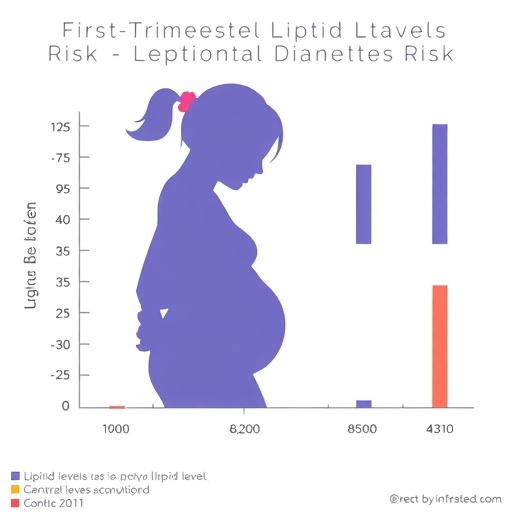
Amniotic Fluid: The Unsung Hero of Fetal Development and Maternal-Fetal Medicine
Amniotic fluid, the clear, slightly yellowish liquid enveloping the growing fetus within the amniotic sac, has long been recognized for its protective mechanical properties. However, recent scientific advances reveal that amniotic fluid is far more than a cushion—it is a dynamic biological milieu crucial to fetal development, organogenesis, and possibly the programming of lifelong health trajectories. Despite its central importance, the detailed biology of amniotic fluid remains one of the lesser-explored frontiers of prenatal medicine, partially due to the ethical and technical barriers associated with sampling this fluid from healthy pregnancies.
Historically, acquiring amniotic fluid has necessitated invasive procedures such as amniocentesis, which carries a non-negligible risk to fetal well-being, thereby limiting routine study of its nuances. Moreover, animal models, though invaluable, often fall short in accurately representing human physiology because of species-specific variations in composition and function. Consequently, the scientific community has faced formidable obstacles in delineating the precise roles that amniotic fluid fulfills during gestation.
Today, the narrative around amniotic fluid is rapidly transforming. Cutting-edge molecular biology techniques including proteomics, metabolomics, and transcriptomics have enabled unprecedented insight into its complex composition. More than a passive, protective substance, amniotic fluid harbors a rich soup of nutrients, growth factors, extracellular vesicles, stem cells, and signaling molecules that collectively orchestrate fetal growth and organ development. This cocktail of bioactive components modulates the developmental milieu, influencing gene expression and cellular differentiation pathways critical to morphogenesis.
One particularly exciting emerging perspective views amniotic fluid as an active agent in fetal programming—the concept that environmental factors during critical prenatal windows have lasting effects on the offspring’s physiology and susceptibility to disease. Amniotic fluid not only nourishes but also communicates molecular cues that may ‘prime’ the fetus for postnatal life. This could profoundly reshape how clinicians and researchers understand the etiology of chronic diseases rooted in fetal development, including metabolic disorders, cardiovascular disease, and neurodevelopmental abnormalities.
Furthermore, the evolving understanding of amniotic fluid’s physiology shines new light on maternal-fetal interactions. The fluid mediates bidirectional exchange, allowing the fetus to excrete metabolites and waste products while receiving vital nutrients and immune factors from the mother. The immunomodulatory properties of amniotic fluid likely contribute to maintaining a delicate tolerance between maternal immune surveillance and fetal antigenic distinctness, thus enabling a successful pregnancy.
Clinically, the utility of amniotic fluid extends beyond its biological importance. Its analysis has become an indispensable tool in prenatal diagnostics. Amniocentesis, while invasive, remains the gold standard for genetic testing and fetal anomaly detection. However, advances are propelling the field towards less invasive modalities harnessing amniotic fluid biomarkers detectable in maternal blood, potentially revolutionizing prenatal screening paradigms.
Recent therapeutic explorations also hint at amniotic fluid’s translational potential. Its rich stem cell and growth factor content is under investigation for regenerative medicine applications, including to treat fetal injuries or congenital defects in utero. Artificially engineered amniotic fluid analogs might one day be used to enhance fetal development or provide support in high-risk pregnancies complicated by insufficient natural amniotic fluid volume or function (oligohydramnios).
Amniotic fluid’s composition is not static; it evolves dynamically throughout gestation, reflective of changing fetal and placental physiology. Early in pregnancy, the fluid primarily comprises maternal plasma diffused across the fetal membranes. As fetal kidneys develop and urination begins, fetal urine becomes a major component, introducing new bioactive compounds and further diversifying the fluid’s milieu. This dynamic variability suggests that the timing of sampling is critical to interpreting the fluid’s biological and clinical significance.
Complex biochemical pathways regulate the production, circulation, and reabsorption of amniotic fluid itself. Aquaporins—specific water channel proteins—and ion transporters control fluid exchange across fetal membranes, while fetal swallowing contributes to fluid turnover, maintaining homeostasis. Disruptions in these tightly regulated mechanisms can result in abnormal amniotic fluid volumes, influencing pregnancy outcomes and fetal health.
Intriguingly, evolutionary biology perspectives propose that amniotic fluid has been shaped by millions of years of adaptation to optimize reproductive success. It not only safeguards the fetus from external mechanical injuries but also creates a controlled environment that supports the sequential development of multiple organ systems in an oxygen-regulated, buffered milieu, minimizing oxidative stress and facilitating immune tolerance. Understanding these evolutionary functions may unlock novel approaches to managing pregnancy complications and fetal developmental disorders.
Despite these strides, major gaps remain in our knowledge of how the various molecular constituents of amniotic fluid interact in vivo and how these interactions translate into specific developmental outcomes. Emerging multi-omics approaches promise to map amniotic fluid’s complex networks, yet integrating these datasets into holistic models of fetal development requires sophisticated bioinformatics and longitudinal clinical studies.
Collaborative multidisciplinary efforts incorporating obstetrics, neonatology, developmental biology, bioengineering, and data science are poised to transform amniotic fluid research into a cornerstone of personalized prenatal medicine. For example, real-time monitoring of amniotic fluid composition could enable customized interventions tailored to the unique developmental stage and needs of each fetus, potentially improving survival rates and long-term health.
In the years to come, the role of amniotic fluid in maternal-fetal medicine is expected to expand beyond a mere biological curiosity towards a transformative element in clinical practice. The fluid’s diagnostic, prognostic, and therapeutic potential offers exciting avenues for early detection of fetal compromise and innovative in utero treatments, shifting the paradigm from reactive to proactive prenatal care.
Ultimately, amniotic fluid exemplifies the profound complexity inherent in human development, a nuanced ecosystem reflecting the intimate dialogue between mother and fetus. As science continues to decipher its secrets, medical practice stands on the cusp of a new era—one in which nurturing this liquid cradle will become central to optimizing lifelong health beginning in the womb.
The appreciation of amniotic fluid’s multifaceted roles underscores an important reminder: what once was regarded as biological waste is in fact a vital orchestrator of life, health, and disease. This shift resonates deeply with broader themes in medicine, emphasizing the intricate connections between environment, development, and health outcomes. Harnessing these insights promises not only to improve fetal and neonatal care but also to illuminate fundamental biological principles shaping human existence.
—
Subject of Research: The biological composition, physiological functions, and clinical implications of amniotic fluid in fetal development and maternal-fetal medicine.
Article Title: Amniotic fluid: its role in fetal development and beyond.
Article References:
Crosland, B.A., Hedges, M.A., Ryan, K.S. et al. Amniotic fluid: its role in fetal development and beyond.
J Perinatol (2025). https://doi.org/10.1038/s41372-025-02313-1
Image Credits: AI Generated
DOI: https://doi.org/10.1038/s41372-025-02313-1
Tags: amniocentesis risksamniotic fluid importanceamniotic sac functionsdynamic biological milieu in pregnancyethical considerations in prenatal studiesfetal development rolesmaternal-fetal medicinemetabolomics in fetal researchmolecular biology techniquesprenatal health trajectoriesproteomics in amniotic fluidtranscriptomics applications





